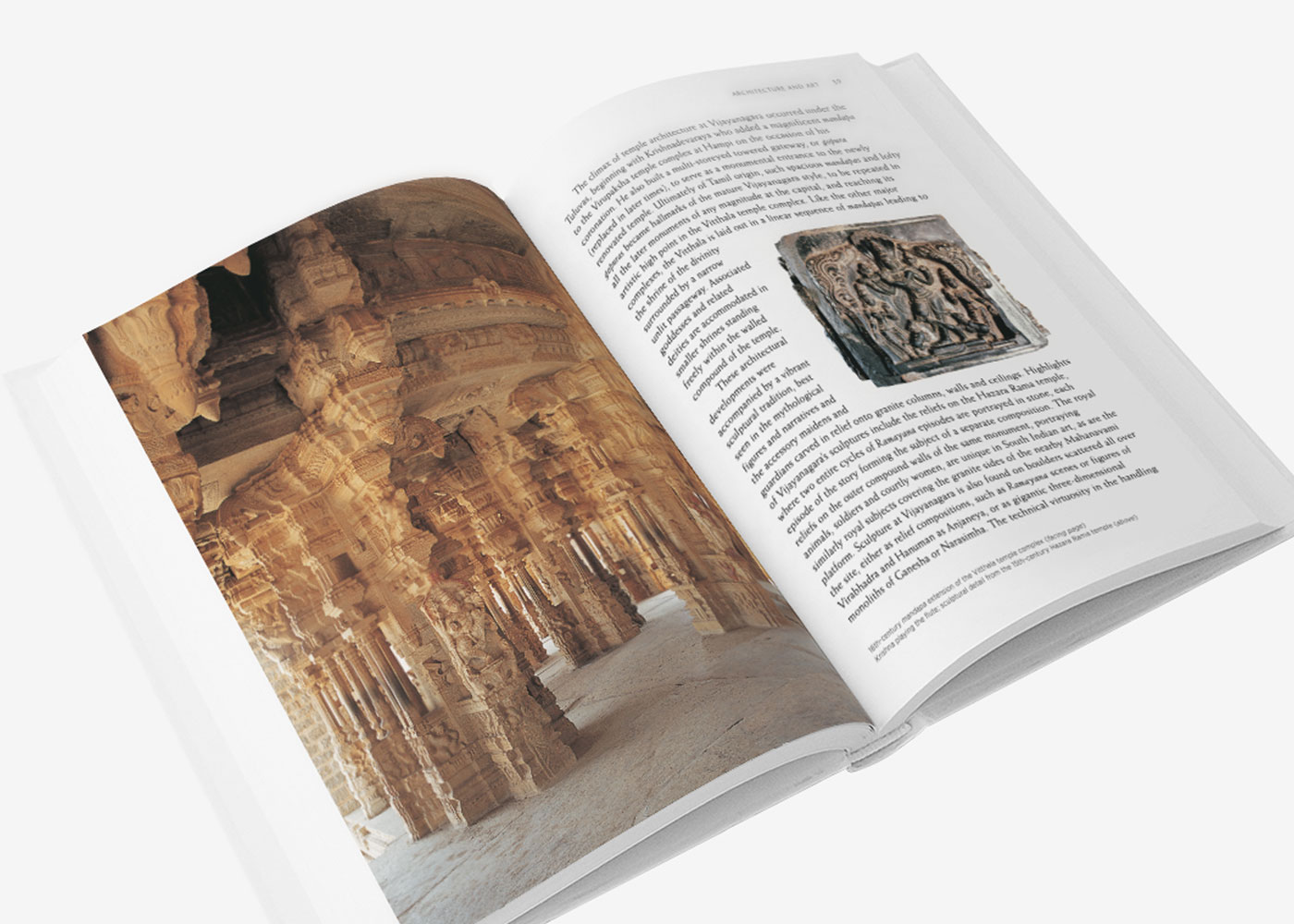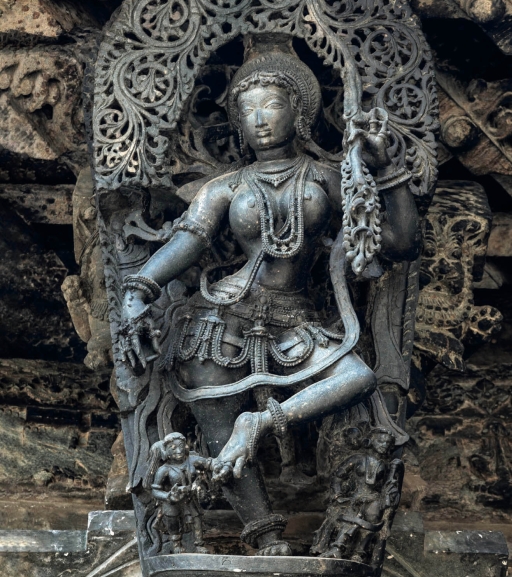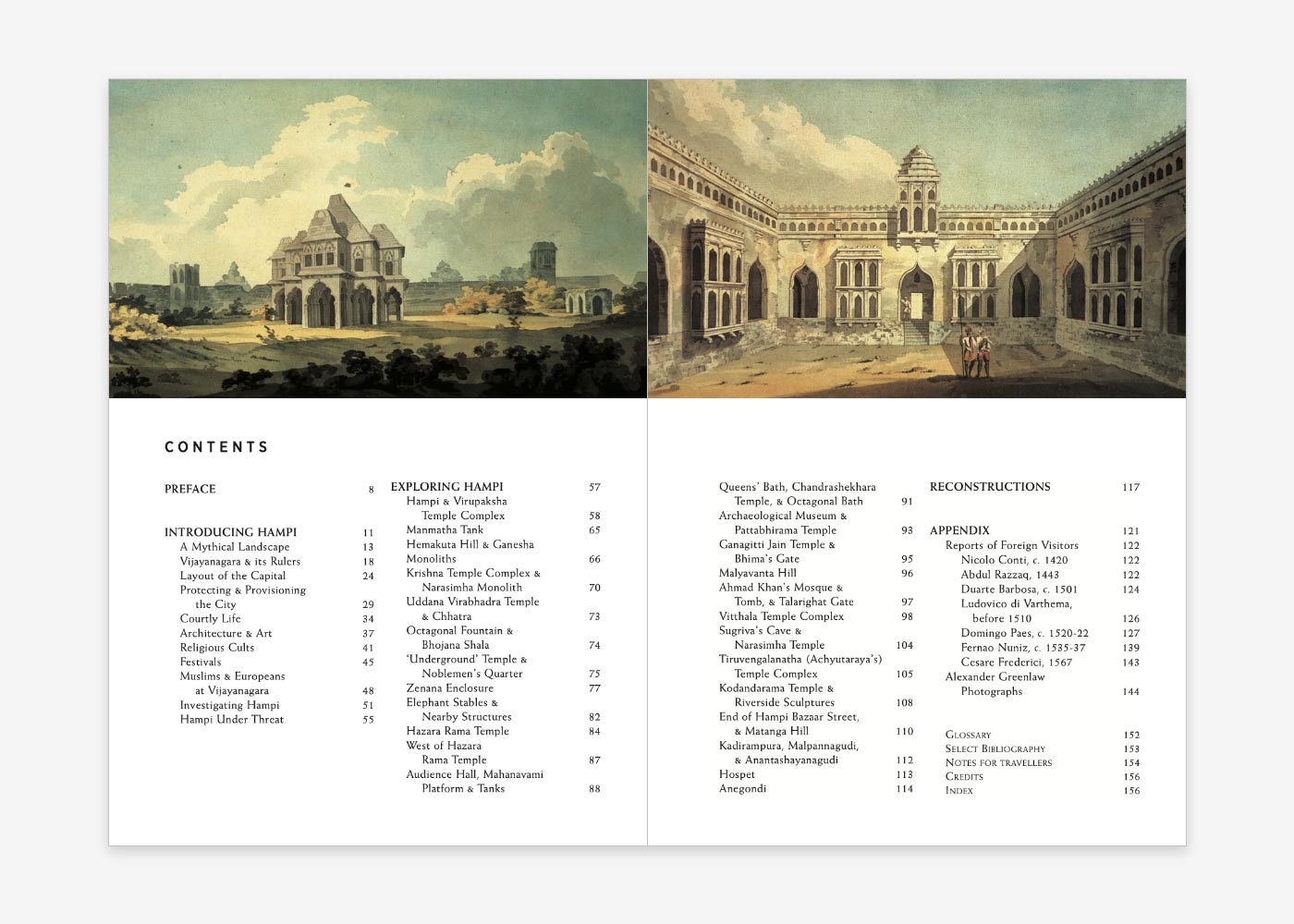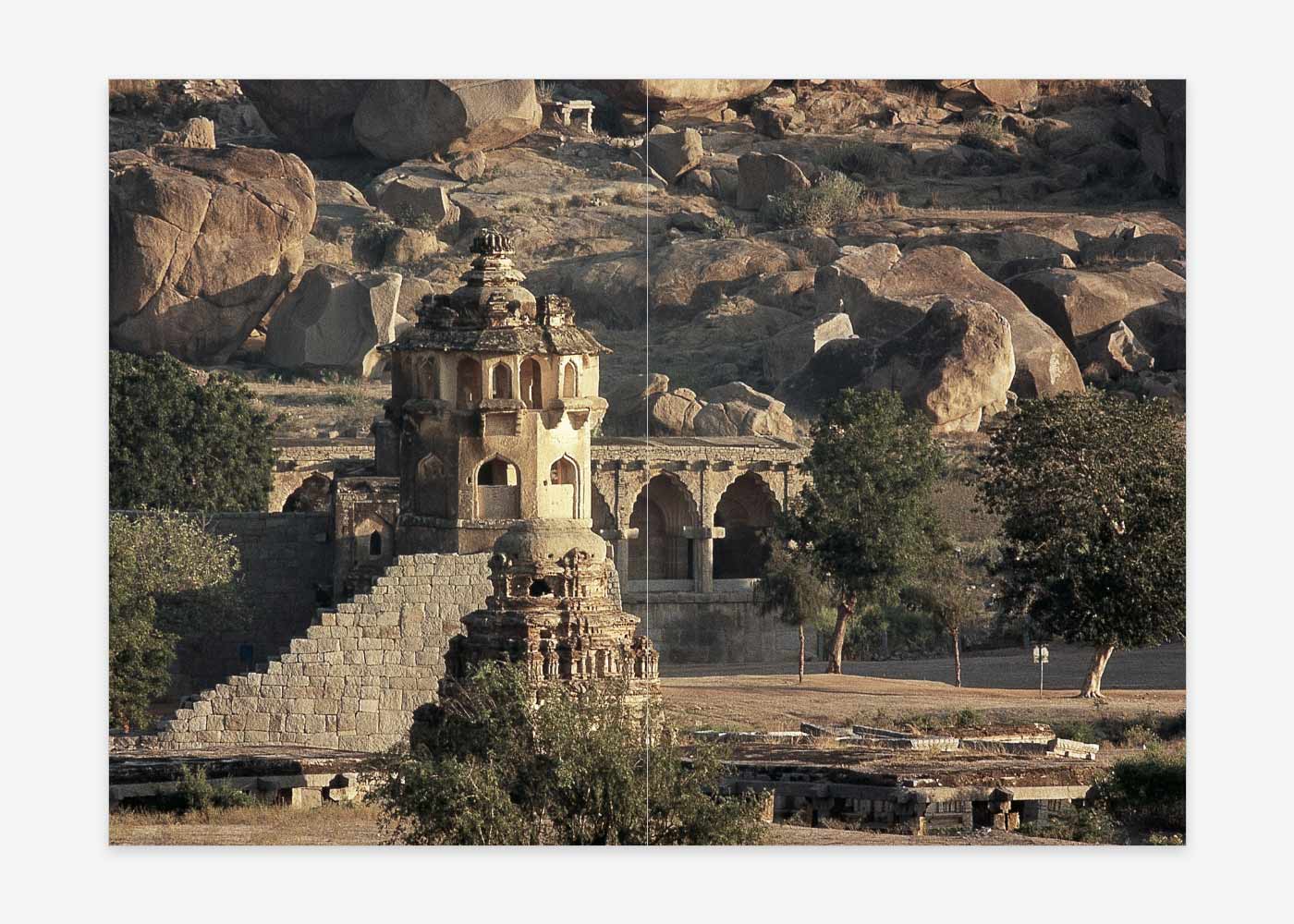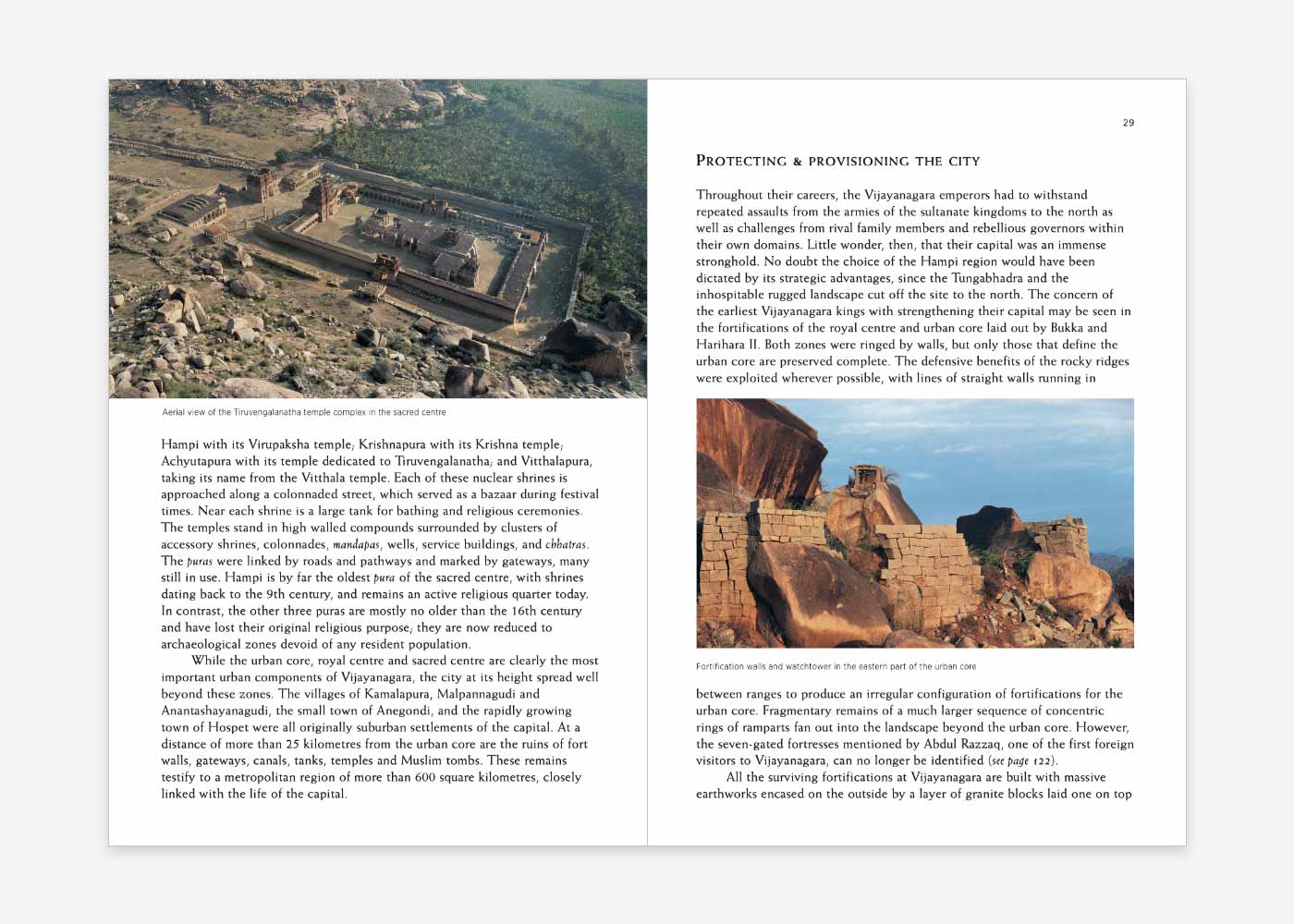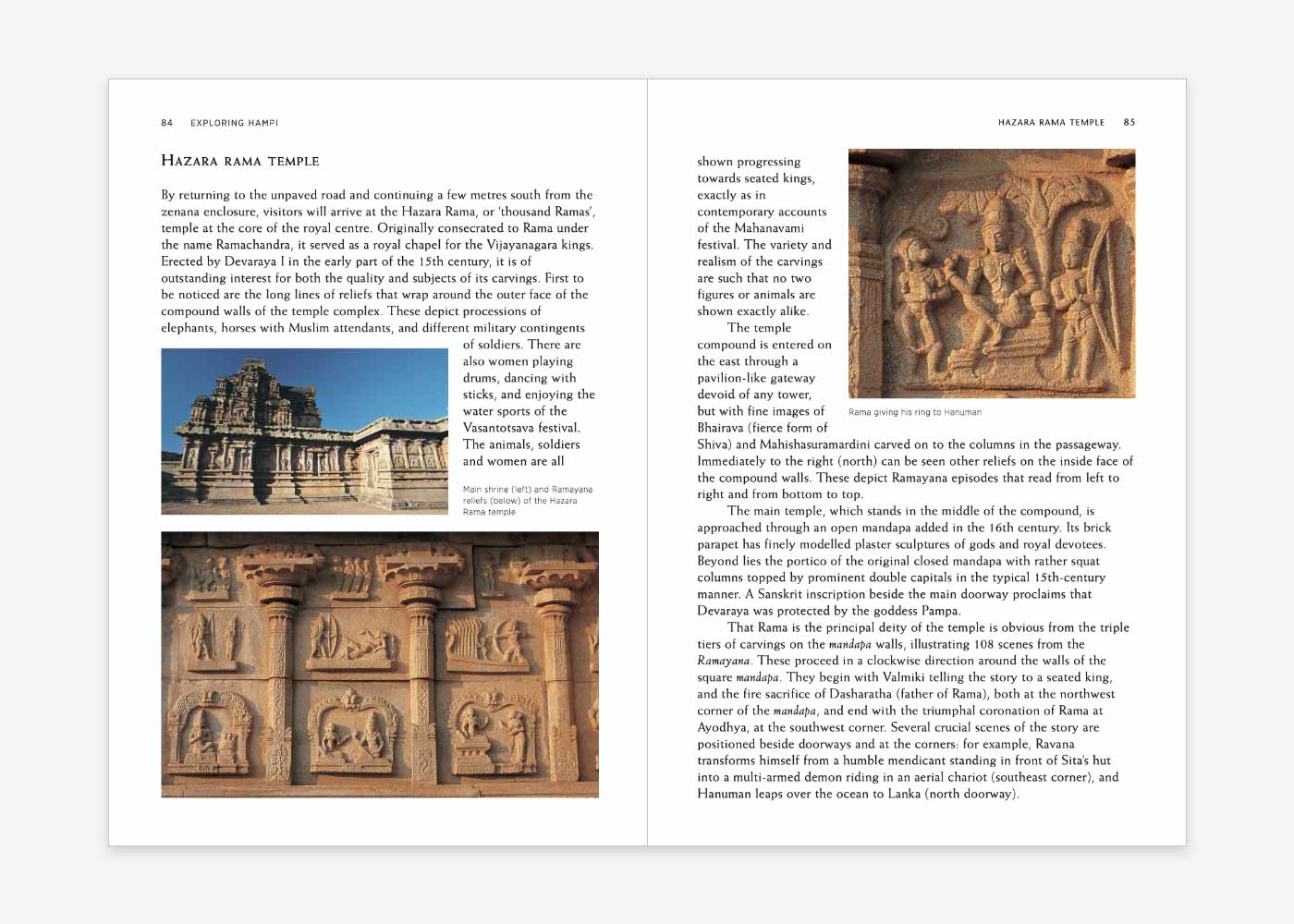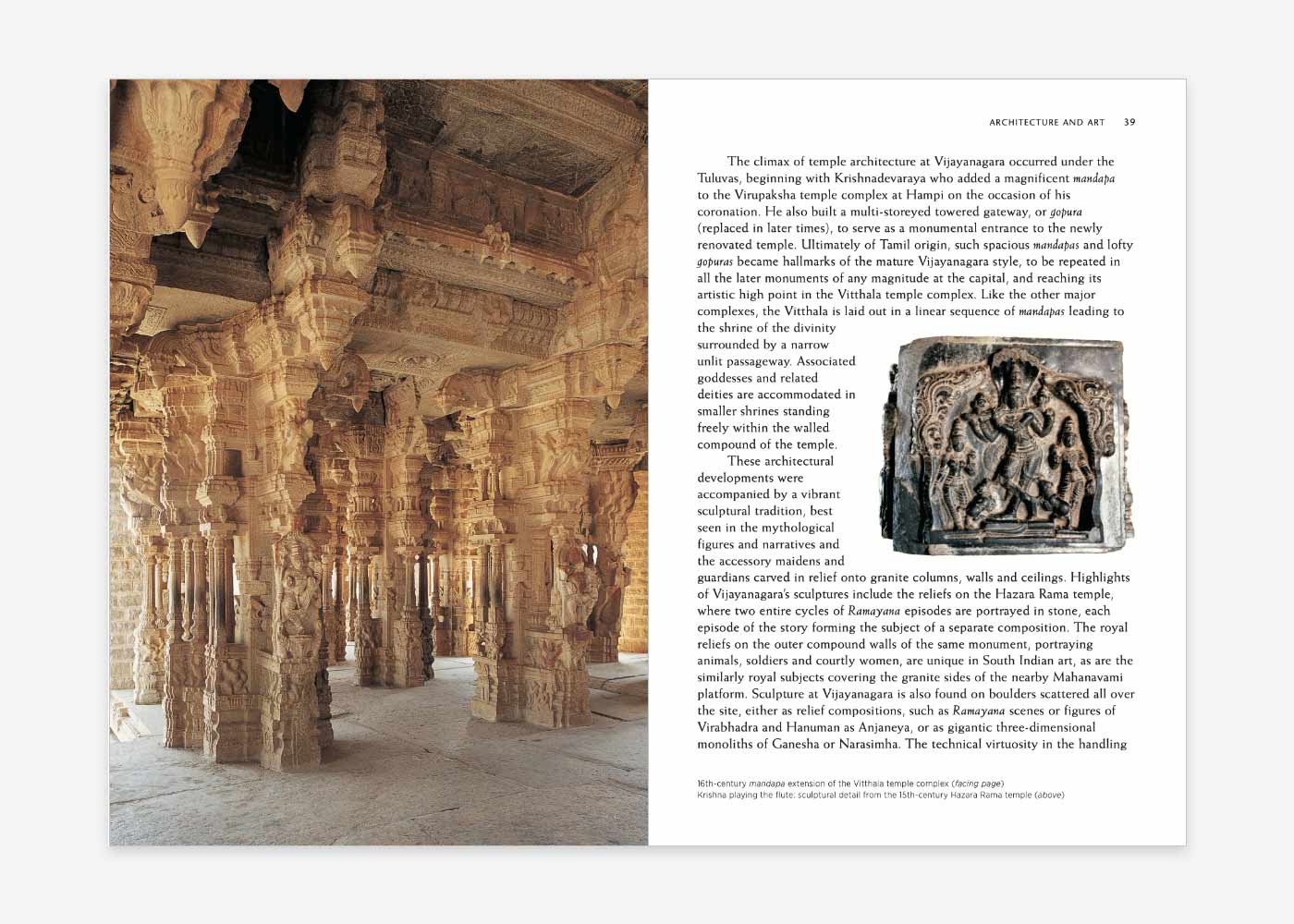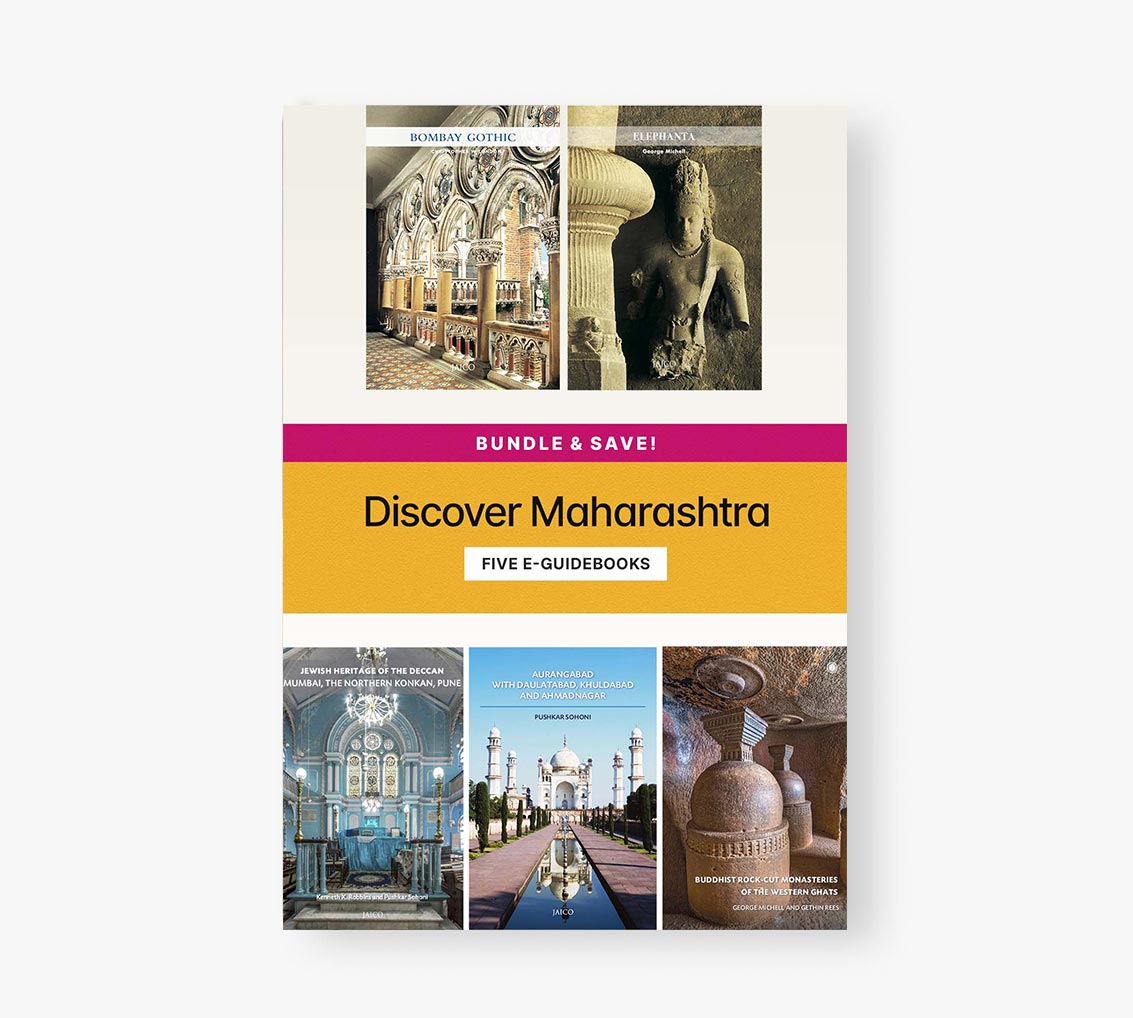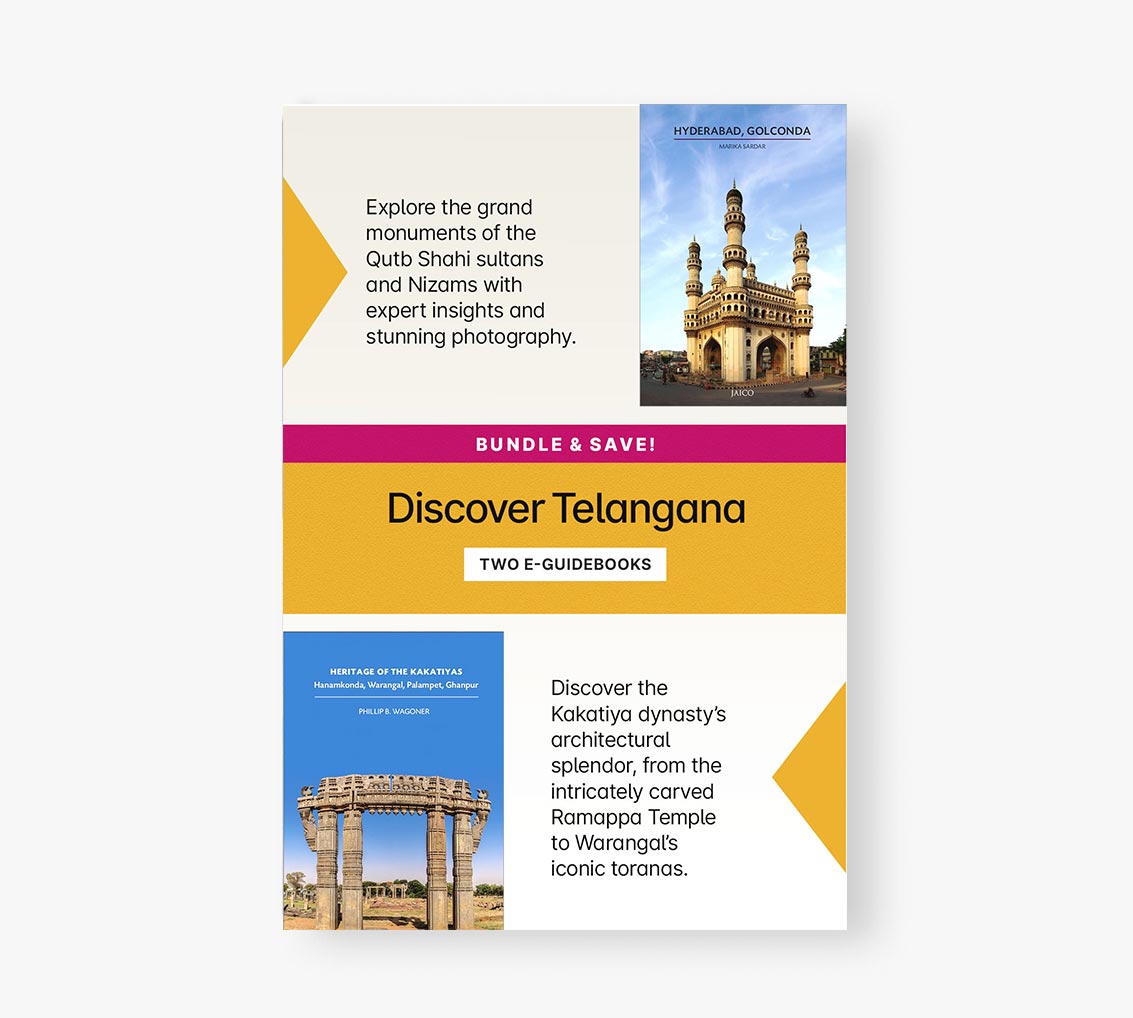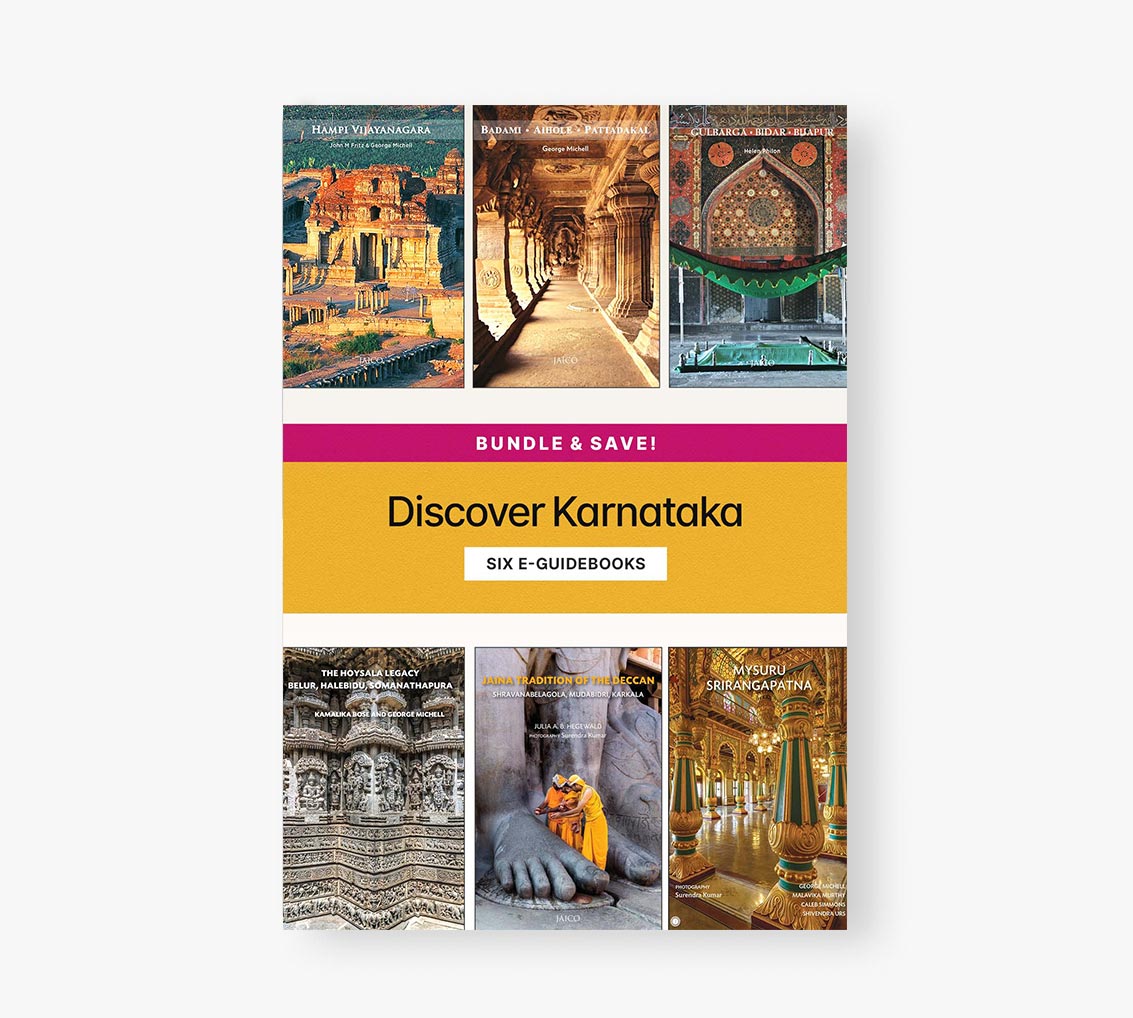Hampi Vijayanagara
Guidebooks
Spread across an immense, rugged landscape, the ruins of Vijayanagara (City of Victory), better known today as Hampi, are among the wonders of the Deccan. With this guidebook, visitors to the site will be able to explore its temples, palaces, pavilions, and fortifications. It begins with the mythological associations of the landscape in which the city is set, notably its associations with the Kishkindha chapter in the Ramayana. Then comes an outline of the history of the city, from its foundation in the middle of the 14th century to its destruction by the troops of the neighbouring sultans in 1565. Provisioning and protecting Vijayanagara is discussed, as well as the nature of courtly life in the capital, and the various religious cults that flourished in the city.
The tour of Vijayanagara begins beside the Tungabhadra River in the village of Hampi with the Virupaksha temple, the only ancient shrine still in active worship. From here visitors are conducted on an itinerary through the enclosures of Royal Centre, where they will see the Lotus Mahal and famous elephant stables. Here, too, is the huge solid platform where ceremonies of the great Mahanavami festival took place, surrounded by excavated basements of palaces and bathing pools. The tour concludes with a description of the Vitthala temple, in front of which stands the celebrated stone chariot (now on the 50 Rupee note).
To help visitors understand how the royal structures once appeared, the guidebook contains helpful reconstructions. It then offers accounts of everyday life by foreign traders and ambassadors who visited the city in its heyday. These are followed by reproductions of the earliest photographs of Vijayanagara dating from 1857. With this array of information, visitors will be equipped to better appreciate the remains of this greatest of all imperial Hindu cities in the Deccan.
.
Details
Author(s)
John M Fritz
John M Fritz received a PhD in Anthropology with a specialty in Archaeology from the University of Chicago. He is currently Consulting Scholar at the University of Pennsylvania Museum of Archaeology and Anthropology. Since 1981, he and George Michell have co-directed an extensive documentation of the Hampi Vijayanagara site. With Michell he is author of Hampi: A Story in Stone.
George Michell
George Michell obtained his PhD from the School of Oriental and African Studies, University of London, for his dissertation on early-Chalukya temple architecture. Since then his research has ranged from surveys of town planning and Islamic buildings to studies of Hindu temple architecture and sculpture. During the 1980s and 1990s, he and Dr. John M. Fritz co-directed an extensive survey of Hampi-Vijayanagara.
Among his many publications are: The Royal Palaces of India, Hindu Art and Architecture, The Great Temple at Thanjavur, Mughal Architecture and Gardens, Late Temple Architecture of India, 15th to 19th Centuries and, together with Helen Philon, Islamic Architecture of Deccan India.
